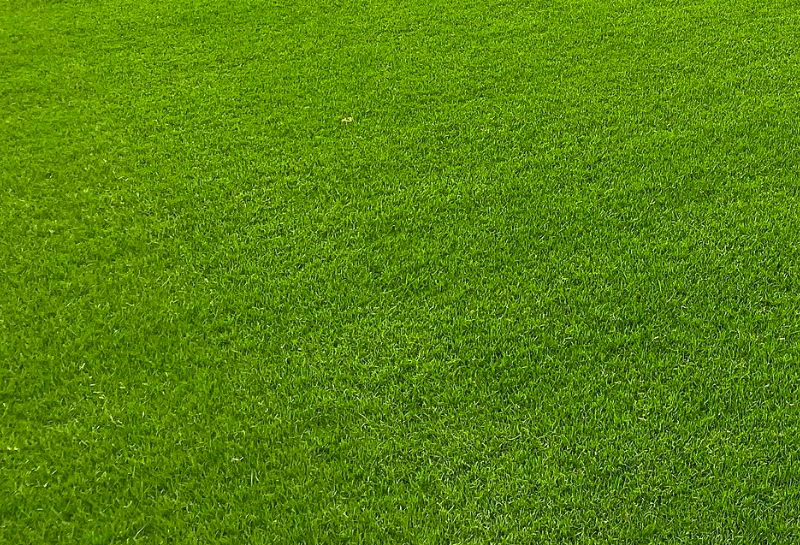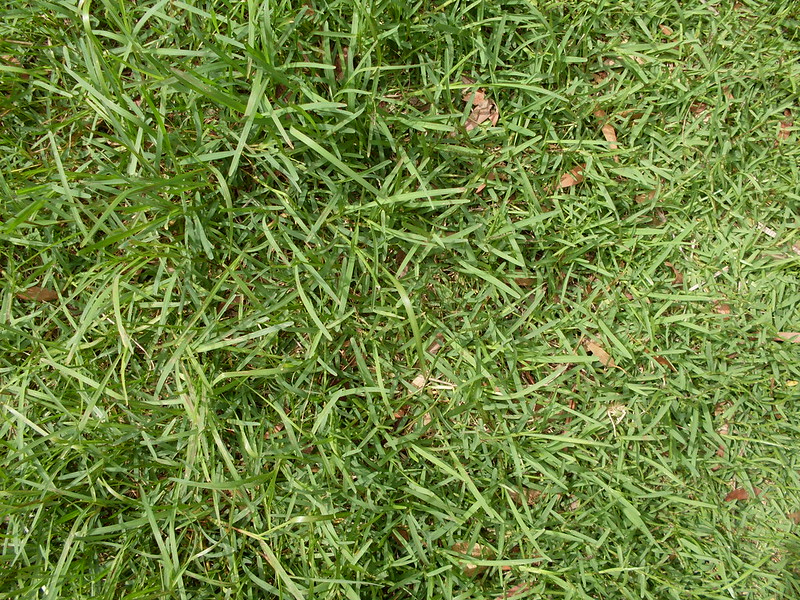
Phoenix isn’t nicknamed the “Valley of the Sun” for no reason. With an average high of 98 degrees Fahrenheit in the summer, planting the wrong grass type in this area’s hot desert climate can mean disaster for your lawn.
Cool-season grasses like ryegrass or tall fescue should only be used to overseed your lawn as protection during the winter, making warm-season grass your best choice for your Phoenix home.
The grasses outlined in this article are:
These grasses are drought and heat tolerant to thrive in the Phoenix area. Learn more about these grasses so you can select the right one for your home.
1. Bermudagrass

Gilba Solutions Pty Ltd | Wikimedia Commons | CC BY-SA 4.0
Bermudagrass is drought and heat tolerant but is high maintenance. It is the fastest-growing of all the warm-season grasses, making it difficult to control, especially around flower beds or borders. Its fast growth rate does mean it stands up well to heavy foot traffic. Bermudagrass requires a lot of direct sun and soil with good drainage. Because of its heat and salt tolerance, it’s also an excellent choice for homes both by the coast or in the desert.
- Classification: Warm-season
- Spreads by: Stolons and rhizomes
- Shade tolerance: Low
- Drought tolerance: Good; can go dormant in extended periods
- Foot traffic tolerance: High
- Maintenance needs: High
- Recommended mowing height: 1½ – 2 ½ inches
Note: Bermudagrass goes dormant in the winter and stays dormant longer than other warm-season grasses like Zoysia.
Grass Seed Options:
– Pennington Bermudagrass Bare Spot (5 lb. bag)
– Pennington Smart Seed Bermudagrass Mix (8.75-lb. bag)
– Scotts Turf Builder Bermudagrass (10-lb. bag)
– Hancock Seed Co. Bermudagrass (50-lb. bag)
2. Midiron
Midiron is a popular grass choice for Phoenix homeowners because it is tough and adaptable. It’s a medium-textured grass known for its beautiful blue-green color. Midiron is a hybrid bermudagrass, so it’s drought-tolerant, low maintenance, and can withstand a great deal of foot traffic. Although it goes dormant in the winter, it recovers quickly from overseeding (especially when using perennial ryegrass), so you can easily transition back to a green yard as the weather warms up. It also can be planted in hard soils like sand or clay.
- Classification: Warm-season
- Spreads by: Rhizomes
- Shade tolerance: Low
- Drought tolerance: High
- Foot traffic tolerance: High
- Maintenance needs: Low
- Recommended mowing height: 2 inches
3. Palmetto St. Augustine
Palmetto St. Augustine grass is a variation of St. Augustine grass that has a darker color and finer texture than regular St. Augustine. It is shade, cold, heat, and drought tolerant. All these attributes make it an excellent choice for Phoenix homeowners. Because it’s so shade-tolerant, you can use it as filler grass under trees and bushes so you can hide any brown or bare patches.
Be careful not to overwater Palmetto St. Augustine, as this grass can be prone to insects and disease, such as gray leaf spot. The team at Sod Solutions recommends giving your Palmetto St. Augustine grass 1 inch of water a week.
- Classification: Warm-season
- Spreads by: Stolons
- Shade tolerance: Good
- Drought tolerance: High
- Foot traffic tolerance: Good
- Maintenance needs: Moderate
- Recommended mowing height: 1 ½ – 2 ½ inches
4. Buffalograss

John Tann | Flickr | CC BY-SA 2.0
Although buffalograss isn’t native to Arizona, it does exceptionally well in its hot and dry climate. It’s also one of the most cold-tolerant warm-season grasses available because it can handle extreme temperatures. This grass is low-maintenance and requires little mowing, watering, and fertilization. Buffalograss goes dormant earlier in the winter than bermudagrass and recovers slowly after overseeding. It’s also prone to weeds, so using a pre-emergent herbicide and letting it recuperate before overseeding can help.
- Classification: Warm-season
- Spreads by: Stolons
- Shade tolerance: Low
- Drought tolerance: High
- Foot traffic tolerance: High
- Maintenance needs: Low
- Recommended mowing height: 1 ½ – 3 inches
Notes: This grass can struggle in sandy soils
Grass Seed Options:
– Everwilde Farms Buffalograss Seeds (1 lb. of seeds)
– Buffalograss seed (primed) (5-lb. bag)
5. Blue grama
Blue grama is a tough warm-season grass that’s both drought and cold-tolerant. It requires minimal mowing, watering, and fertilizing. This bunch-forming grass can grow up to 1 ½ ft tall. It also works well for erosion control in arid regions and can survive in sandy, loamy, and dry soils. Blue grama is often grown on Phoenix farms, as it’s a great source of food for livestock and other wildlife.
- Classification: Warm-season
- Spreads by: Slow-spreading rhizomes
- Shade tolerance: Low
- Drought tolerance: High
- Foot traffic tolerance: Moderate
- Maintenance needs: Low
- Recommended mowing height: 1 ½ – 2 inches
Grass Seed Options:
– Everwilde Farms Blue Grama Grass Seeds (1 lb.)
– Nature’s Seed Blue Grama Grass Seeds (1 lb.)
How to choose the right grass for your Phoenix lawn
Just like not every home is the same, each grass type on this list has unique needs and requirements.
Some questions to help you determine the best grass for your home include:
- Do you want a low-maintenance lawn?
- If you would rather spend more time enjoying life and less time dealing with your lawn, choose midiron, blue grama, or buffalograss.
- Is your yard mostly shaded?
- Really the only option is Palmetto St. Augustine, since all the other options do not do well in shaded yards.
- Do you have kids and pets?
- If you need a grass that can stand up to heavy foot traffic, choose buffalograss, midiron or bermudagrass.
Overseeding with cool-season grasses
With the desert climate in Phoenix, warm-season grasses look beautiful through spring and summer but can leave your lawn brown and unattractive in winter.
You can avoid this by overseeding with cool-season grasses like annual and perennial ryegrass and creeping bentgrass.
The University of Arizona recommends overseeding in October when the daytime temperatures are between 80 degrees and 85 degrees Fahrenheit and nighttime temperatures are above 55 degrees Fahrenheit.
Need help deciding on the best grass for your Phoenix yard? Contact a local lawn care professional to install and maintain your beautiful lawn.
Main Photo Credit: Melikamp | Wikimedia Commons | CC BY-SA 3.0
Lawn Love participates in the Amazon Services LLC Associates Program, an affiliate advertising program. Lawn Love may earn revenue from products promoted in this article.